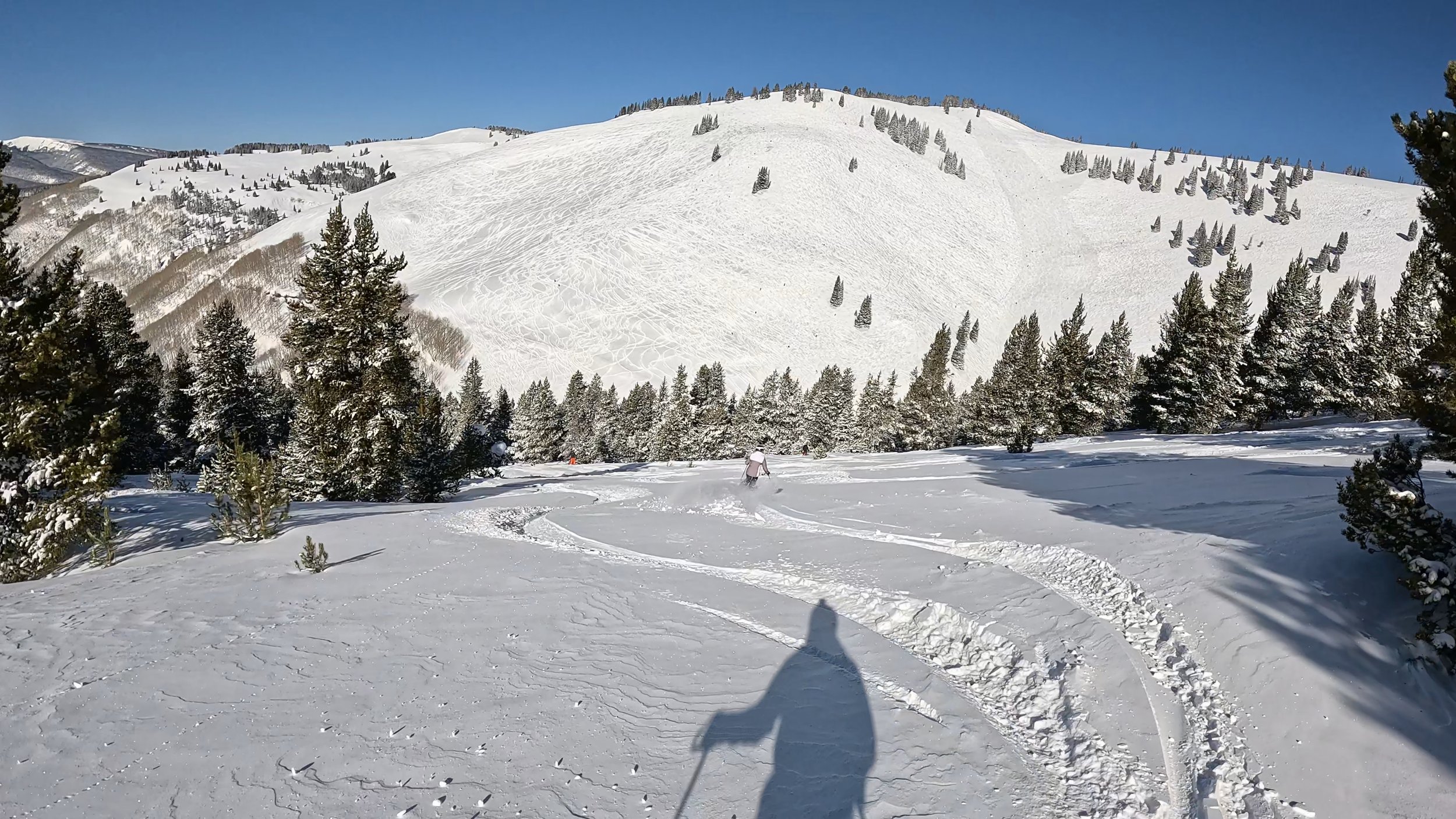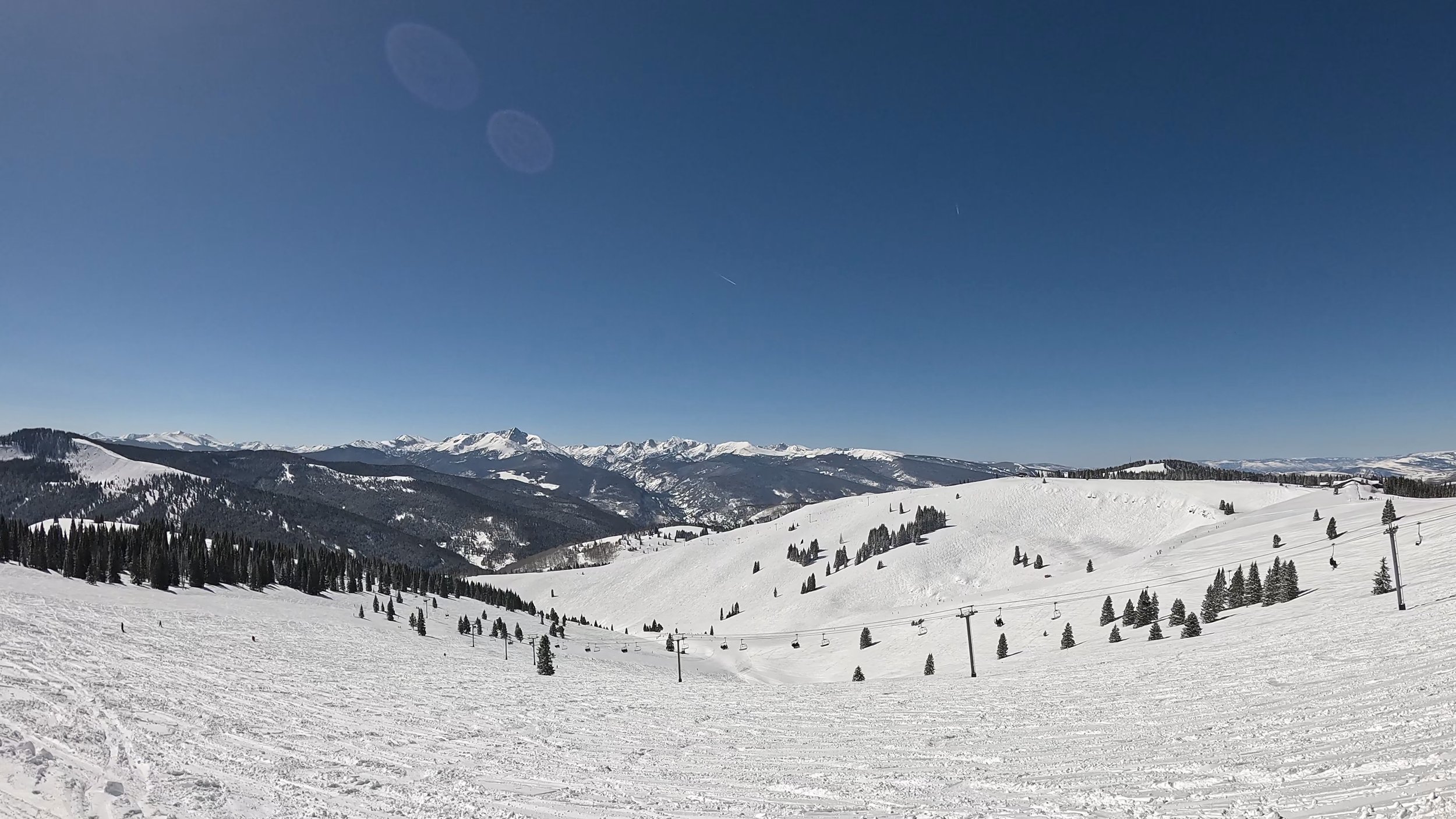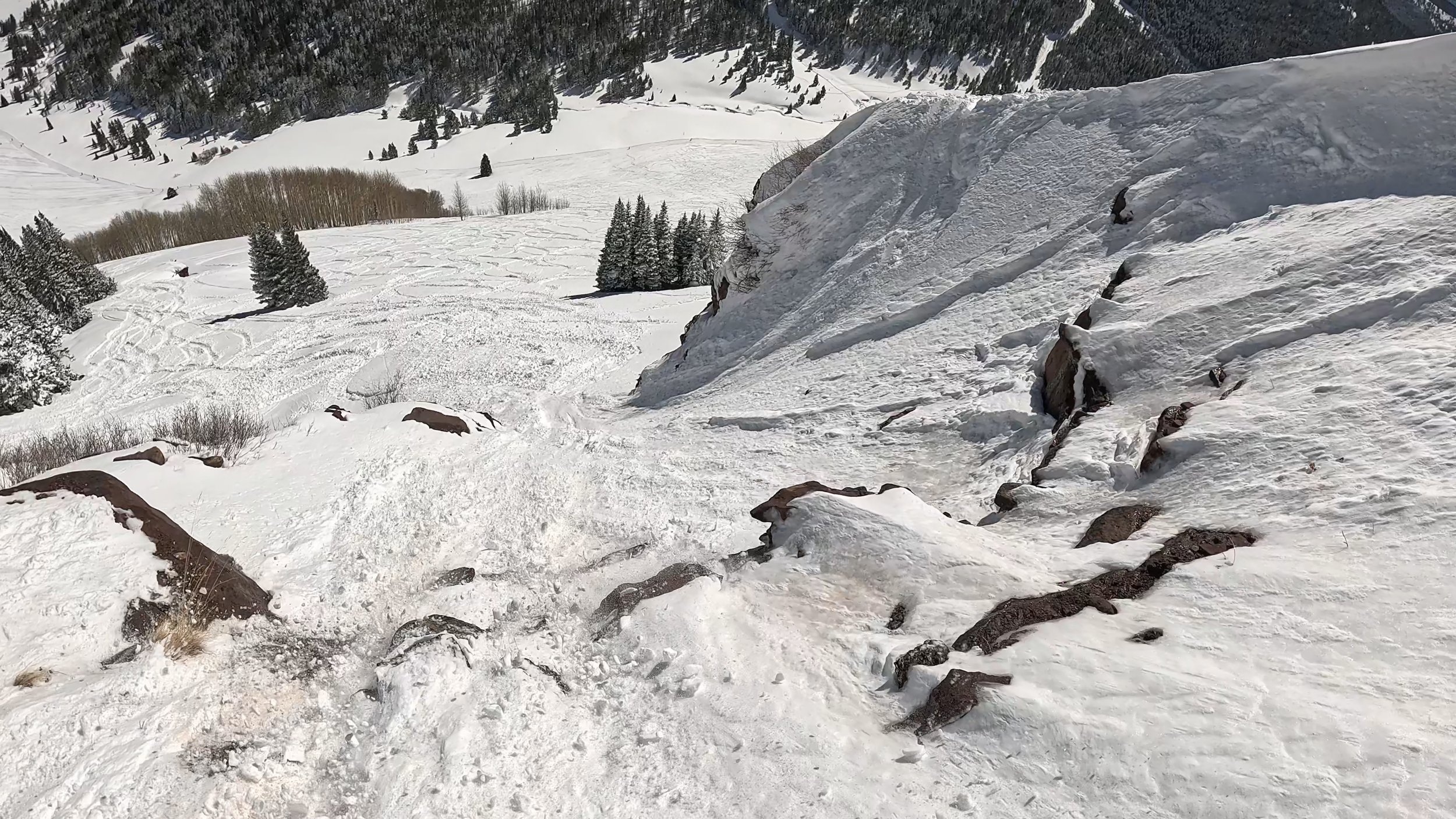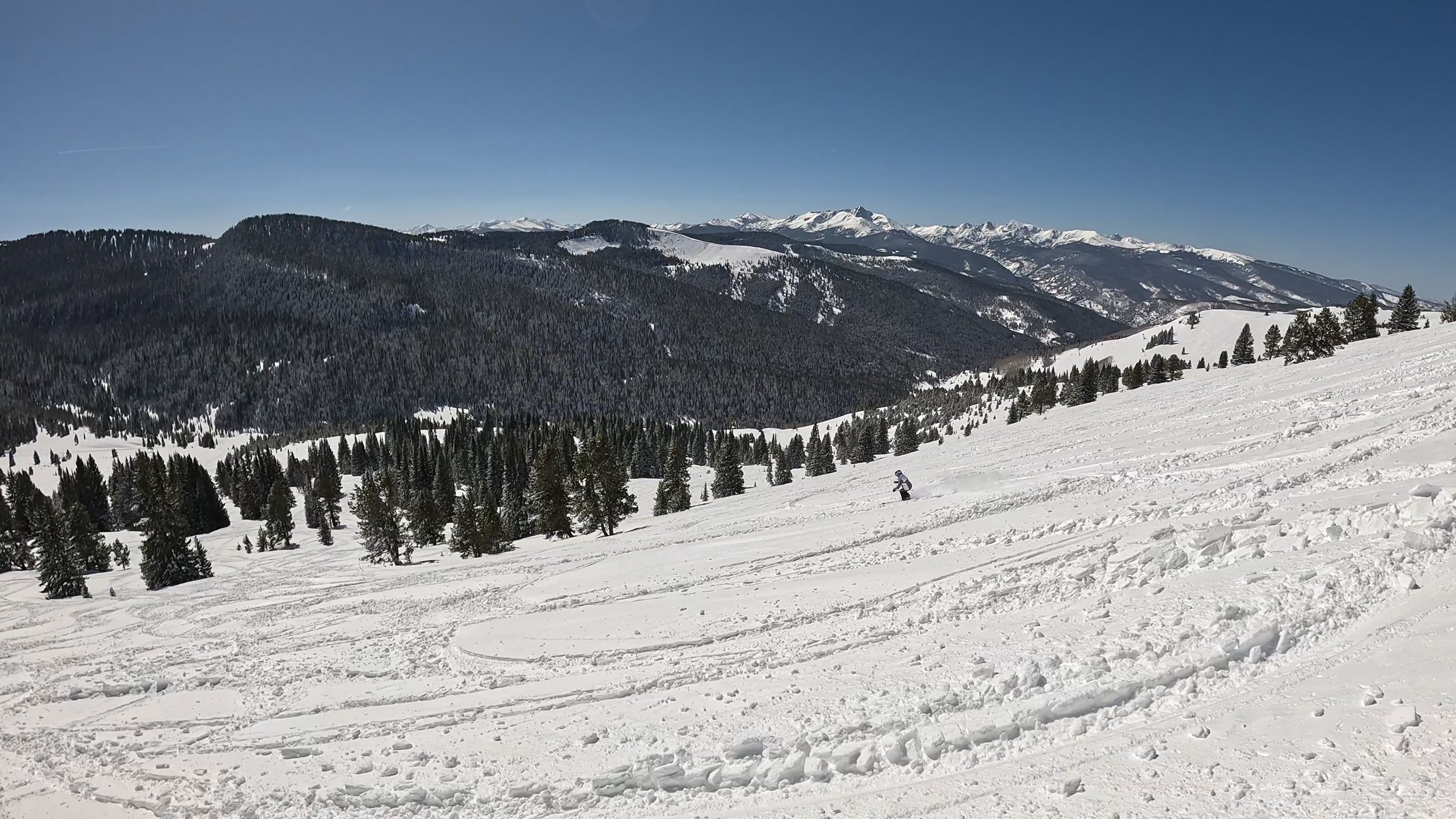Vail Back Bowls: A Comprehensive Overview
Vail’s Back Bowls are called legendary for a reason. While they all come across as massive, high-alpine ski slopes on the surface, they do hold a myriad of differences that makes each one unique. Whether you are looking for traditional bowl skiing, glades, groomers, or cliffs, Vail’s Back Bowls offer it all—you just need to know where to find it.
In this piece, we’ll give you a comprehensive walkthrough of each of Vail’s eight bowl areas, including what each one especially stands out for.
A map of Vail’s Back Bowls, from left to right: Sun Down Bowl, Sun Up Bowl, Tea Cup Bowl, China Bowl, Siberia Bowl, Inner Mongolia Bowl, and Outer Mongolia Bowl.
Sun Down Bowl
Sun Down Bowl is the westernmost Back Bowl, and the sun sets right over it—hence the name! Sun Down is Vail’s largest bowl, and it’s also the sole Back Bowl with no intermediate terrain, meaning the area is for advanced and expert skiers and riders only.
Up until 2022, Sun Down Bowl had no direct lappable lift access—while guests could drop in from the top of Chair 3 (Wildwood Express) or Chair 7 (Game Creek Express), the terrain here did not have a lift to get directly back up, forcing guests to take an indirect route via Chairs 5 and 3 to lap it. But as of 2023, the newly installed Chair 17 (Sun Down Express) offers this direct access. Despite the more convenient lappability, this area is still less crowded than most of the other bowls.
Sun Down Bowl is perhaps most famous for Ptarmigan Ridge, which is a traverse to runs such as Seldom, Never, and OS (short for Oh Sh*t)! These runs are low traffic and often are great places to find powder stashes. In addition, these runs, and others on the opposite side of the bowl like Windows, offer tree skiing either before or after the bowl terrain. Many skiers and riders love these runs because of the uniqueness of tree skiing and bowl skiing all in the same run. The rest of Sun Down Bowl comprises more traditional bowl skiing, so skiers and riders who stick to the middle of the bowl can enjoy the wide open slopes Vail’s Back Bowls are famous for.
Sun Down Bowl is also home to a Jerry Garcia shrine, but we’ll leave it up to you to find out where!
The westernmost slopes of Vail’s Sun Down Bowl, as viewed from Ptarmigan Ridge.
Sun Up Bowl
Sun Up Bowl is what started it all! As Vail’s first bowl, Sun Up has a storied history, having been hiked by the founding members when they first discovered the mountain. This is the bowl with the famous “The Legendary Back Bowls” sign at the top—and thanks to this symbol, it’s arguably Vail’s most iconic bowl. Because of this circumstance, as well as it location behind two very popular frontside lifts, Sun Up Bowl is often the busiest bowl at Vail.
The first run most people see when arriving to Sun Up Bowl is The Slot. The Slot is blue rated and groomed, which is rare for Vail’s Back Bowls. The rest of Sun Up Bowl is mostly traditional advanced bowl skiing, but a few areas, most notably Over Yonder and WFO (Way the F Out), offer excellent glades as well. These glades are some of the most underrated on the mountain, offering short, widely-spaced trees and often holding fresh powder when other places start to get tracked out.
Sun Up is accessed by two lifts, Chairs 5 (High Noon) and 9 (Sun Up). Many of Vail’s bowls require a catwalk at the end to reach the lift, but thanks to Chair 9’s location, runs such as Headwall and Yonder (not to be confused with the Over Yonder glade trail) can be lapped quickly and without any flat sections.
A view down the Sun Up Bowl’s Over Yonder run, with the other side of the bowl visible in the distance.
Tea Cup Bowl
One might overlook Tea Cup Bowl when discussing Vail’s Back Bowls. This smaller bowl area is serviced by Chair 36 (Tea Cup Express), which generally offers short lines throughout most of the day. However, there is a big catch to Chair 36’s morning and midday emptiness—the lift also serves as the primary exit from Blue Sky Basin. This results in a significant spike in queue lengths around 2:00pm daily, coinciding with the closure of Blue Sky Basin. If you plan to ski or ride Tea Cup Bowl, try to avoid this time.
Tea Cup Bowl is great for its traditional bowl skiing, featuring notable advanced runs such as Emperor’s Choice and Morning Thunder. Red Zinger, a blue-rated trail, is frequently groomed, offering a smoother ride down for intermediate riders or those looking to carve. Additionally, Tea Cup Bowl provides ample opportunities for tree skiing on runs like Tea Cup Glade and down in Marmot Valley. It’s to be noted that the snow in Marmot Valley is often thin and slick due to its lower elevation and location directly in the sun’s path.
For thrill-seekers, Tea Cup Bowl has sections with small rocks and cliffs that get hit by locals regularly, including the only terrain sections in the Back Bowls that are marked as double blacks (although Vail, perhaps on purpose, does not include these on the trail map). However, if high-flying isn’t quite your style, these natural features are easily avoidable.
A view up Tea Cup Bowl’s Sweet N’ Sour and Genghis Khan runs, with the Tea Cup Express lift in the distance.
China Bowl
Named for its cliff line at the top of the bowl (not accessible by lift) that reminded early Vail skiers of the Great Wall of China, China Bowl is undoubtedly one of the most talked-about areas in Vail.
For those new to bowl skiing or intermediate skiers looking to hone their skills, the Poppyfields runs, both East and West, are frequently groomed and provide excellent opportunities for one’s first bowl run. More advanced skiers and riders also flock to Poppyfields to lay down aggressive carves. These groomers are wide and have a consistent pitch.
Adventure seekers will find their thrill at Dragon's Teeth, home to some of the most iconic cliffs in Vail. Another local favorite is Genghis Khan, which begins with a medium to large cornice (slightly smaller than Lover's Leap) and is followed up by steep bowl skiing. On powder days, this spot becomes a hive of activity with advanced skiers eager to launch off this natural feature.
For those who prefer glade skiing, Shangri-La offers a fantastic intermediate option, threading through serene tree-lined paths. Even with China Bowl’s popularity, Shangri-La is often a great place to find powder.
Access to China Bowl is primarily through Chair 21, the Orient Express, which can get quite busy given the popularity of the area. If you find Chair 21 crowded, a handy tip is to take the catwalk to Chair 36 (Tea Cup Express) or Chair 37 (Skyline Express up to Blue Sky Basin) for an alternative route.
A view down a mellower section of Vail’s China Bowl from the top of Chair 21.
Siberia Bowl
Tucked away and less frequented, Siberia Bowl stands out as the go-to destination for those in search of some of the most extreme terrain in the Back Bowl’s. Though one of the smaller bowls, it offers adrenaline-pumping experiences, making it a unique spot for adventurous skiers.
Among the notable runs, Rasputin’s Revenge and Red Square are particularly renowned. These runs are steeper than most other areas of the Back Bowls and they offer a variety of cliff-jumping opportunities, from smaller drops to massive ones.
Accessing Siberia Bowl involves a bit of a trek. From the top of Chair 21, you'll need to take a catwalk that winds around to just before the Mongolia platter. Alternatively, the Mongolia platter itself can take you to another part of Siberia known as the Bolshoi Ballroom. This side of the bowl features wide-open, low-angle glades that are perfect for those looking for a less intense experience within the extreme environment.
The return journey to Siberia Bowl after a run involves wrapping back to the bottom of Chair 21 and taking it up again, followed by the catwalk from the top of 21 back around to Siberia Bowl. This inconvenient access route contributes to the area’s lower traffic, which can be a significant advantage for those looking to escape the crowds.
While not technically marked with double-black ratings, sections of Siberia Bowl are home to what’s arguably Vail’s most technically challenging terrain.
Inner Mongolia Bowl
For those seeking the most secluded and least accessible terrain in Vail, it’s well worth checking out the Inner and Outer Mongolia Bowls. These areas are known for their remoteness, requiring a bit of effort to reach, but skiers and riders who make the trek are often rewarded with untracked powder.
To access these elusive bowls, your journey starts from the top of Chair 21. From there, you’ll navigate a catwalk that winds around past Siberia Bowl to the Mongolia surface lift. This platter takes you to the top of Inner Mongolia Bowl. Once you've enjoyed the descent, you'll find yourself on another long catwalk taking you to the bottom of Chair 21. To lap the Mongolia Bowls, you need to repeat this lengthy process.
Despite the logistical challenge, the Inner Mongolia Bowl offers a unique skiing experience. It's less steep than other bowls, making it an excellent choice for those looking for low-angle powder runs. The widely spaced trees and low traffic also make it an ideal location for finding powder stashes days after a storm has passed. However, the Inner Mongolia Bowl does face directly south, so if temperatures have warmed up at any point since the last snowfall, this highly-exposed area can become very crusty and unenjoyable.
The Inner Mongolia Bowl is a great place to score low-angle powder runs after fresh snowfall.
Outer Mongolia Bowl
Outer Mongolia Bowl is very similar to its neighbor, Inner Mongolia Bowl. However, accessing Outer Mongolia involves a bit more effort compared to Inner Mongolia. After reaching the top of the Mongolia platter, you must traverse an additional catwalk to get to this terrain. This extra stretch of traversing both at the top and the bottom makes Outer Mongolia even more secluded than its counterpart.
The terrain in Outer Mongolia mirrors that of Inner Mongolia, offering similarly gentle slopes dotted with widely spaced trees—ideal for those seeking low-angle powder runs. That being said, the added effort to reach and return from Outer Mongolia makes this area even less crowded than Inner Mongolia. If you make it to Outer Mongolia, it’s not unlikely that you’ll have the place entirely to yourself.
For skiers eager to escape the crowds, Outer Mongolia offers an unmatched opportunity compared to the rest of Vail. But like with Inner Mongolia, freeze-thaw cycles can wreak significant havoc on Outer Mongolia’s conditions—so make sure that temperatures have been consistent since the last snowfall before making the trek out.
Vail’s Outer Mongolia Bowl takes quite a bit of work to get both in and out of, but it’s usually the least tracked area of the resort.
Game Creek Bowl
While not officially classified as one of Vail's Back Bowls, Game Creek Bowl’s namesake makes it worth a mention in this article. Game Creek Bowl offers a distinct experience that sets it apart from its neighbors in the back, but it’s also quite unique from the rest of Vail’s Front Side.
Game Creek Bowl offers traditional bowl skiing primarily under and around the chairlift, making it a good option for those who enjoy that classic bowl skiing experience. Additionally, Game Creek Bowl features several runs cut through the trees that more closely resemble the frontside terrain of Vail than they do the back. This mix provides skiers with a variety of experiences within one area.
A notable trail in Game Creek is Lost Boy, a welcoming green run with a story. The trail is named after a 14-year-old boy who, before Game Creek Bowl was considered inbounds terrain, skied there, got lost, and had to spend the night in the wilderness. Today, Lost Boy is one of Vail’s most sought-after green runs—and it’s the sole beginner run at Vail that exists within a “Bowl” area. Lost Boy also serves as one of the entry points to the Minturn Mile, one of the most renowned side-country runs in Colorado.
While not officially a Back Bowl, Vail’s Game Creek area offers a unique blend of tree-cut trails and open bowl terrain.
Final Thoughts
As we wrap up our tour of Vail’s Back Bowls, if there’s one thing to take away, it’s this—each one has its own special flavor. Whether you’re cruising down the well-groomed runs of China Bowl or tackling the adventurous cliffs of Siberia, there's something here for almost every skier or rider's taste. There’s a reason why these swaths of high-alpine terrain have helped Vail grow into the powerhouse it is today. So, lace up your boots, grab your skis or board, and discover the unique charm of each bowl for yourself!









